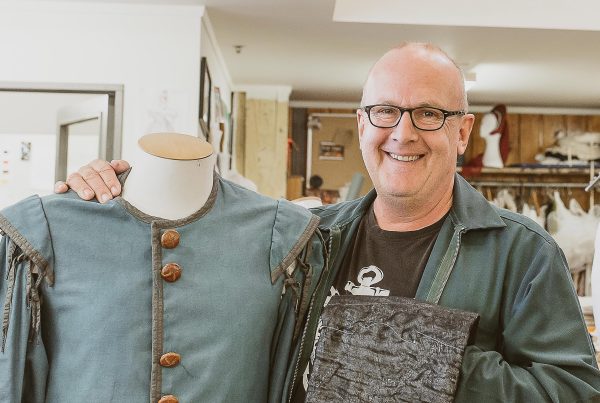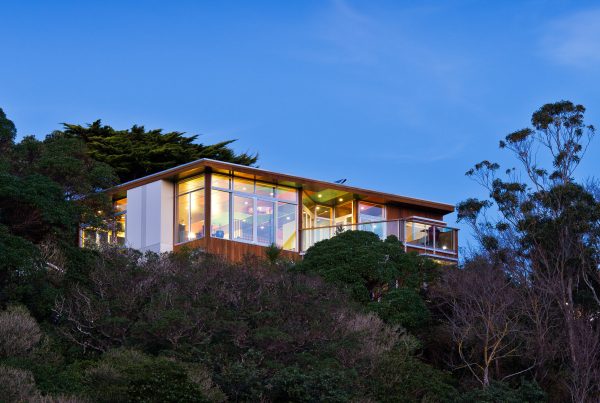Everywhere I went in Marlborough, people said they were waiting for summer to really begin. I said, “What do you mean?” It was sunny, it was still, it was hot. What more did they want? But then I am a Wellingtonian, and easily satisfied with a warm day. They have higher standards in Marlborough.
Wine, of course, was uppermost in their minds. Frank, my guide on a tasting tour of a tiny fraction of the area’s many vineyards, told me the stunning fact that the Wairau Plains are home to 85 percent of New Zealand’s wine production. So the weather matters, economically just as much as anything. Of that enormous volume of wine, three-quarters of it is Sauvignon Blanc. But they are diversifying — and proud of it. I incautiously remarked that I associated red wine, in New Zealand at least, with Hawke’s Bay and the Wairarapa, and was told quite sharply that, actually, Marlborough is producing some pretty good reds as well.
The wine tour was excellent, at any rate. We went to Lawson’s Dry Hills, one of the originators of the screwcap; Mahi (the te reo term for ‘work’ or ‘craft’), where winemaker Brian regaled us with tales of Italian-themed parties in their dark and atmospheric cellar; and Seresin, an organic winery that makes a stunning Chardonnay and an unexpectedly brilliant orange-flavoured olive oil.
I could’ve spent the whole trip in wineries; at times, it almost felt like I did. Not only do these places do wine: they do food as well. We ate in wineries, dined in wineries. Wither Hills did a remarkably good steak, which I ate in a Mediterranean-style courtyard looking out over rows of vines warming in the sun. Hans Herzog produced the most delicious sparkling rosé I have ever been fortunate enough to taste. I slept in wineries, too: one night I stayed in the Marlborough Vintners Hotel, a series of rather elegant units set among the endless flat plain of vines.

Marlborough wine maker Louis Vavasour
They know how to put you up, this Marlborough lot. The Scenic Hotel in central Blenheim features a pillow menu with no fewer than six options. A third place I stayed, a hotel called the Peppers Portage, is tucked away in one of the sounds, accessible also by road but mostly by boat. Although you could see it was awaiting the upgrade its new owner assured me was on the way, it was a delightful place to get away from everything — everything except good food (and wine, of course). Pork belly with bok choy, green mussels with ginger and coconut… it was all local, all inventive, a lovely mix of the fruits of sea and land.
That is Marlborough all over, in fact: things to do both on and off shore. Picton, standing at the junction of those two domains, was a pleasant surprise. I hadn’t been there in 20 years, and remembered being dropped off the ferry in what felt like the middle of nowhere — the terminal was, I think, in a different spot then — and with nothing much to do other than the admittedly excellent mini-golf. But it was bustling this time round. It helped that its annual maritime festival was in full swing, with stalls, children’s rides and a variety of entertainment on the main stage, including some plucky young hip-hop dancers from the local dance academy.
There were some oddities, of course. The local parking warden contract had, I was told, been handed over to Armourguard, a rather terrifying prospect; and we hit at least one of the local cafés on what must have been an off day, given the erratic service. But there was so much to do! One afternoon I hired a mountain bike and chugged my way around what locals charmingly call the Snout, a peninsula poking out into Queen Charlotte Sound and affording some fantastic views all around.
For an unforgettable experience, however, it was hard to beat the dolphin-watching. There had been dolphins accompanying the Interislander ferry on the way over to Picton, which — much as the ancient Greeks had — I took as a good omen. But that was as nothing compared to being in the water with them. In an aquarium, the dolphin tours operator informed us that we are the spectators, and the dolphin is the entertainment. But they like to do things differently out in the sounds. So we were the entertainment: clad in our wetsuits, snorkels and goggles, we were let into the water a couple of hundred metres ahead of a pod of dolphins and encouraged to make the silliest sounds possible to attract them.
It worked. Not once but thrice we saw the sharp fins approaching and then, as we looked down into the water, glimpsed those slim grey shapes passing just beneath us in the gloom. Later on, the dolphins — as if to prove the operator wrong — turned entertainers, leaping and frolicking in the wake of the boat, and gliding in front of the stern; but there was nothing to match being right up close with them.
There was plenty of fun to be had on land, as well. One day I visited the Omaka Aviation Heritage Centre, which plays host to some part of Peter Jackson’s enormous collection of First World War memorabilia, most notably his dozens of period aeroplanes, all struts, canvas coverings and double wings. Weta Workshop had come to the party, as a bonus, creating a series of unnervingly life-like mannequins that help you step back in time to an era when shot-down airmen were graciously greeted by enemy officers before being taken captive.
There was history in the wineries, too. Brancott Estate — Montana, as was — has a heritage centre, a cool, dark oblong set above the vines in what passes for a hill in those parts. They do a good line in historic pictures and artefacts — a spade that the Queen used on one notable visit, for instance (as well as, inevitably, some astoundingly good white wine). You start to get the feeling that it isn’t enough just to be a winery anymore. Wither Hills has its Mediterranean-style complex; Brancott Estate has its heritage centre; and Cloudy Bay, that most celebrated of vineyards, has a raw bar.
This was both exactly what it sounded like, and a lot better: a small semi-circular bar, just outside the wine centre itself and overlooking the lawns, serving an array of uncooked morsels, ranging from the locally obvious — oysters and clams — through to salmon and beef carpaccio. On this sunny day, and with a touring Irish band playing in the background, only the crustiest of visitors would have failed to enjoy themselves.
The culinary highlight of the trip, however, came at what is reputed to be one of the area’s best restaurants, Gibb’s on Godfrey, which served something called duck liver brûlée: a rich, luscious duck-liver pâté covered with a layer of caramelised sugar. The combination was quite extraordinary.
This isn’t, perhaps, tourism for the budget-conscious — but you can do cut-down versions of most of Marlborough’s experiences. Cycling from vineyard to vineyard for the (mostly free) wine tastings looks pretty enticing. And if you fancy something a bit more down to earth than raw oysters and reserve Sauvignon Blanc, there’s always Moa Beer. They do all manner of strange and interesting brews, from a ‘breakfast’ version (featuring cherries) to an Imperial Stout that is rich with coffee and chocolate flavours. It is pretty much what you would logically get if you applied winemaking principles to the task of crafting beer.
And why not? Marlborough seems like the kind of place that, in the best New Zealand fashion, isn’t afraid to do things differently or strike out on a new path. On my last day in Marlborough, I took an inflatable kayak down a stretch of the Pelorus River, where, I was told, they had filmed the barrel scenes in the most recent Hobbit film. The fact that I hadn’t seen the film was neither here nor there: this was beautiful scenery, taken at a gentle pace. As we floated down the river, my guide, Pelorus Eco Adventures owner Shane, explained that he had recently converted his vehicles to run on leftover fish and chip oil, having built his own small-scale processing plant. There had been mishaps along the way — like the time he got the balance of additives wrong and turned an entire barrel into soap — but on the whole it was going well, he said.
It was certainly different, and admirable, and a nice reminder that, alongside the wineries and the sounds boat tours, there are some fun and unexpected things bubbling away in what, in recent times, some have taken to calling the Wanaka of the North. And, at such a short distance from the capital, it is simplicity itself to get there. All in all, it is more than enough to make at least one Wellingtonian think that, in truth, it probably shouldn’t be another 20 years before he returns.









